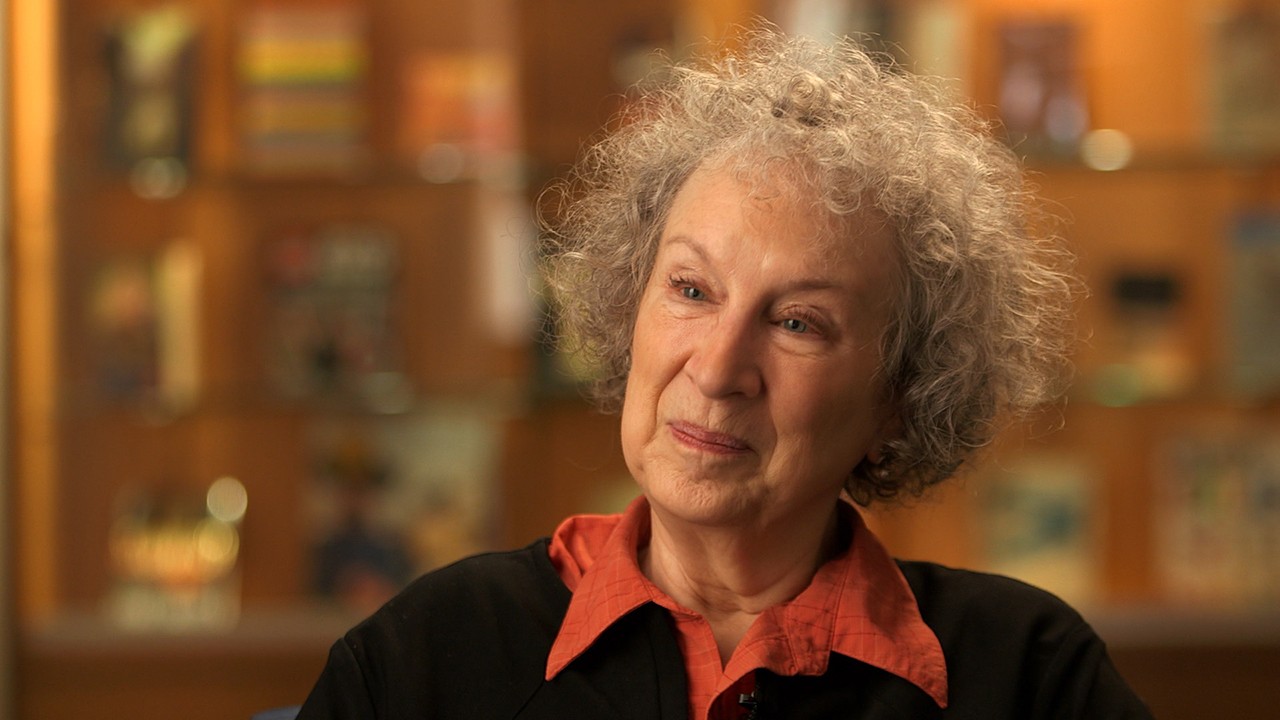If the opposite of love is not hate, or indifference, or politics, it's probably data. Falling in love is a series of exceptions; data is an attempt to understand what rules the world is playing by. Love and data can coexist, of course, and both are often good. They are just, for now, incompatible.Mary Parsons, the protagonist of Catherine Lacey's slightly mind-fucking new novel, The Answers, knows this, but she needs money. Having escaped her zealously religious father, who attempted to raise her "in a state of complete purity," at age 17, she has accumulated student loans, credit-card debt, a mysterious, undiagnosable illness, and the attendant medical bills. Now, at age 30, she has nothing but a stale job at a travel agency, an empty apartment in Brooklyn, and one friend, Chandra. Chandra, a worldly and wealthy college roommate who is about three stages beyond burning sage on the wellness spectrum, recommends Mary try an expensive, one-on-one "healing work" program called PAKing, or Pneuma Adaptive Kinesthesia, to deal with her pain. Despite the haziness of the regimen, which resembles a more spiritual Grinberg Method and is conducted by a therapist named Ed, it immediately works. Each session costs $225. Mary will need 35. When she spots an ad for an "income-generating experience" on a health-food-store billboard, she feels she has no choice but to answer it.
Advertisement
Luckily or not at all, Mary turns out to be perhaps the only person in the world suited for the very well-paid position. After a series of weird interviews, she is told she has been chosen to serve as the "Emotional Girlfriend" to a wildly famous movie star, Kurt Sky, as part of a research study called the Girlfriend Experiment, or GX. The Girlfriend Experiment will divide the traditional life partner role into discrete emotional functions—Intellectual Girlfriend (who is quickly deemed too intellectual and fired), Anger Girlfriend (for screaming, manipulation, and nagging), Maternal Girlfriend, Mundanity Girlfriend (for hanging out in the background while Kurt does other things), and the Intimacy Team (for sex)—in order to better understand "emotional evolution" and to develop "a more honest, nuanced view of human pair–bond selection, behavior, and maintenance." The GX will also be a "healing" exercise for Kurt himself. Kurt's assistant, Matheson, tells Mary that the Emotional Girlfriend is the "most demanding" of all the Girlfriend roles, and the most difficult to fill. She is hired because in addition to having no real possessions, she also has little personality and few interests; this makes her seem like a good listener, and even better, she has never heard of Kurt Sky, or read a gossip magazine, or seen a movie. (In college, "a beady-eyed" friend tried to introduce her to classic films, to no avail—she couldn't concentrate and fell asleep within the first few minutes of Citizen Kane.) There is no chance she'll become starstruck and mess up.
Advertisement
Outsourcing aspects of love—whether it's excitement or the appeal of another gender or the task of talking to you about your work—is not so different from what polyamorists do, but as with a particular kind of imbalanced coupling, only one person thinks this could end well. Everyone else, from the Girlfriends to the project's Research Division, is more or less in it for the paycheck. Surprisingly, the person most likely to benefit from the experience is Mary: Although she finds the GX "at once terrible and logical," she is still so bewildered by life, 13 years post-captivity, that the prospect of having everything spelled out for her must seem appealing. Quotidian dilemmas like having sex, scheduling dates, buying groceries, cleaning, fighting, and even deciding when and how she should say, "I love you," are all taken care of by other Girlfriends or determined by the Research Division.Lacey is at her best when she is skewering, and while the emotional dystopia she constructs is not necessarily the core of the novel, it is the most successful part.
Of course, when you put it that way, some people might be into this. Lacey is at her best when she is skewering, and while the emotional dystopia she constructs is not necessarily the core of the novel, it is the most successful part. She transitions artfully from lampoons of sexism (Kurt and the GX) to clear-eyed scenes of misogyny—in flashbacks, Mary is assaulted and forced to fellate a stranger in an alley, and another Girlfriend is raped by her boyfriend—and her supporting cast of characters is a biting commentary on the various ways people have succumbed to the 21st century. Chandra's attempts to solve her problems—which range from having been hit by a bus to "self-diagnosed candida"—with increasingly delusional forays into the wellness space—from "tinctures" to sensory deprivation to MDMA to, finally, a cult—will be recognizable to anyone who has mocked or been tempted by a soft-voiced West Coast lifestyle guru. Kurt's attempts to solve his dual loneliness and narcissism with increasingly delusional forays into big data are run-of-the-mill tech-bro disruption. Meanwhile, the tone-deaf scientists of the Research Division are annoyed that their subjects produce "inconsistent" data and concerned that "they were working on borrowed time until Kurt figured out his objective—to solve love—was impossible. Most believed that Kurt and Matheson were at least a little sociopathic, but only a few thought this was a problem."
Advertisement
Watch Broadly Meets Margaret Atwood:

The true focus of Lacey's interest, though, is Mary, which is difficult because she belongs to a recent cohort of female anti-protagonists: Devoid of personality and interests, they are not so much characters as devices through which the author can funnel observations about modern life and thoughtful plots. Some examples: The unnamed narrator of Katie Kitamura's A Separation is in the long process of leaving her husband when he is found murdered in a ditch in Greece, and when his parents arrive, she must pretend like they hadn't been separated for months because he had never told anyone. The unnamed narrator of Zadie Smith's Swing Time has, like Lacey's Mary Parsons, given her life away to the megalomaniacal celebrity that employs her. Rachel Cusk's Outline and Transit are helmed by a deadpan listener whose name we barely learn, and the books consist almost entirely of the narratives of other people. (The strategy is Cusk's response to the deluge of hatred she encountered after writing a couple of controversial, very personal memoirs.) In The Answers, most of Mary's credit-card debt comes from foolish but understandable spending on "compulsive travel," which she loved because "the first thing you learn when traveling is that you don't exist—I didn't want to stop not existing." PAKing feels revelatory for her because, she says, "I could almost forget I had a body." And Mary Parsons isn't even really her name; she was born Junia Stone, and when her savior aunt re-christened her Mary on the drive away from her father's house, she told her, "You could be anyone you want with a name like Mary."
Advertisement
At times it seems like Mary might do just that, though her breakthroughs can be embarrassing. While the Girlfriend Experiment successfully undermines algorithm worship, Mary's spotty life experience means she inevitably takes an analytical approach to existence, too, and she has epiphanies that end up sounding more like the musings of a stoned philosophy major than those of an insightful outsider. She describes the people in Manhattan as being "always so arranged, layered with clues about who they were and where they were in their history. Leather purses carried hieroglyphic messages about the carrier's taste and socioeconomic status." After a breakthrough PAKing session, she sees a homeless couple locked in an embrace and realizes that what the couple had "she had it, too, only she had it alone, somehow. It was clear then, so painfully clear, that people fell in love to find something in themselves that they'd had all along."
In the end, Mary's emptiness only helps her avoid manipulation for a little while. When things inevitably fall apart and she is fired/dumped, Kurt turns the project into what is basically an autofictional film—natural for someone with "an overawareness of self"—in which the "actresses," including Mary, are not credited. Mary responds to the invasion of privacy and mind by sequestering herself indoors, getting really into interior decorating, and ordering everything she wants or needs online. (Despite the acrimonious split, she gets great severance.)It's another clever send-up, and one that exemplifies the ways women writers have struggled to deal with our newfound ability to be anything we want—Mary begins and ends the novel where she started, with a past and no conception of a future. Nonfiction authors have approached this challenge by overcompensating, promoting cheery self-actualization through hollow personal brands that treat optimism as an end rather than a means—we are constantly being told to Lean In, to embrace being a Spinster or among All the Single Ladies, and if all else fails, to come up with Hope in the Dark. Meanwhile, fiction has seen a rise in female perspective minus female identity, a series of characters who have our attention and don't really know what to do with it. Like Kitamura, Smith, and Cusk, Lacey deftly examines the effects of fame, trauma, heterosexuality, social media, and technology on women, only to conclude, "Now what?" Reading The Answers is a bit like falling out of love: To paraphrase something Mary once told a boyfriend she was breaking up with, you feel like something's missing, even though it's right in front of you.Follow Lauren Oyler on Twitter.The Answers by Catherine Lacey is available in bookstores and online from Farrar, Straus and Giroux.Mary belongs to a recent cohort of female anti-protagonists: Devoid of personality and interests, they are not so much characters as devices through which the author can funnel observations about modern life and thoughtful plots.
